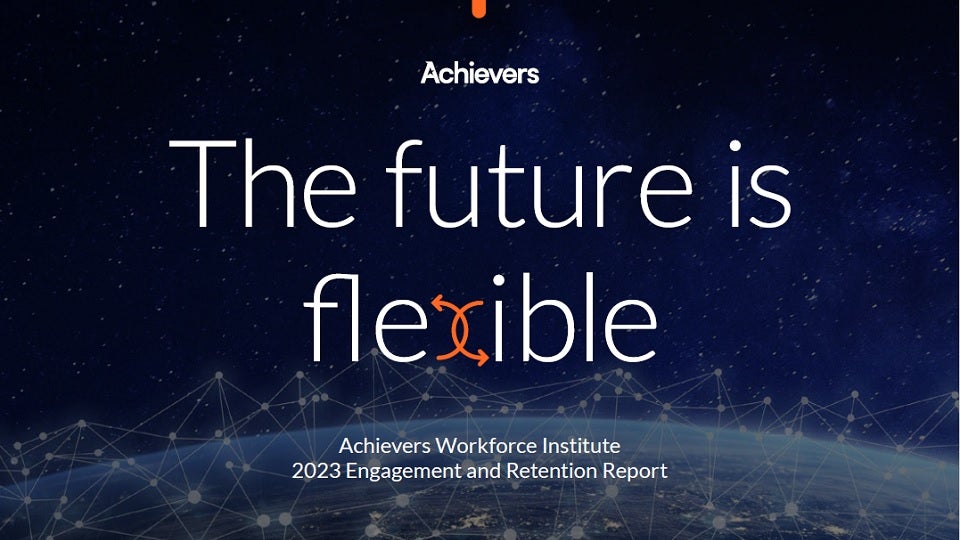Create a culture that means business™
Email address
Employee motivation can serve as a major driver of organizational success. But keeping team members motivated still proves elusive for many organizations today, and not without reason. Every employee responds to different motivators, and investing in the wrong ones only depletes your company’s budget without effect. Preferences also shift over time, so what engages your workforce right now is almost certain to evolve in the coming years.
How can your organization stay on top of employee motivation and engage team members over the long haul? It’s not as difficult as you might think, as long as you understand what employee motivation really is, the types of incentives today’s workers respond to, and how to keep your finger on the pulse of employee sentiment at your company.
What is employee motivation?
Employee motivation is the level of commitment, drive, and creativity that your team brings with them to work every day. It has a major impact on almost every part of your company, whether positive or negative. Motivated employees do everything they can to get the job done, improving productivity and serving as examples for the rest of the workforce. Unmotivated employees do only what’s necessary to get by, and they’re more likely to start looking for positions elsewhere.
Thankfully, employee motivation is something that your enterprise can cultivate. Beyond the obvious levers available to any company, like raises and promotions, organizations can turn to unique incentives tailored to their workforce. Offering flexibility in work arrangements, professional development opportunities, and establishing recognition initiatives are just a few of the methods organizations can explore to keep employees motivated.
Types of motivation
Motivation is either intrinsic or extrinsic. Understanding the difference between the two is a fundamental step on the journey to improving employee motivation.
Intrinsic motivation
Intrinsic motivation is driven by internal emotions like happiness, pride, or satisfaction. When you’re intrinsically motivated, you perform actions because they give you positive feelings, like completing a passion project or satisfying a personal desire to learn.
Extrinsic motivation
This second type of motivation is driven by external influences, such as earning a reward or avoiding punishment. Deadlines, performance improvement plans, bonuses, and prizes are all sources of extrinsic motivation.

Measuring employee motivation
Before taking steps to boost employee motivation, your organization should establish benchmarks and prepare to measure the effect of its efforts. Employee motivation is a bit intangible by nature, as it attempts to reflect how employees actually feel. But it’s still possible to derive valuable insights into the current state of motivation by analyzing honest employee feedback.
Pulse surveys are the best way to gather frequent, targeted feedback in a way that doesn’t disrupt employees’ work lives. A pulse survey is a relatively brief set of questions sent to employees, typically using an employee engagement platform. These surveys are easy to complete and anonymous, so team members can express themselves freely. With the right questions and the capability to take quick action on the results, pulse surveys can be one of your most powerful tools for understanding employee motivation.
HR chatbots use the power of AI to give your employees a way to voice their concerns at any time. Similar to pulse surveys, HR chatbots allow anonymous input that can be shared anytime. This engages your team, and gives you access to real time feedback. HR chatbots provide an always-on channel that employees can use to quickly communicate their needs and ideas to your organization. It’s an ongoing conversation that gives your organization’s people leaders a constant stream of data they can leverage to drive meaningful change.
5 ways to improve employee motivation
While employee feedback should guide your organization’s motivation strategy, there are some core initiatives that will pay dividends across your company it always pays to consider.
1. Focus on employee engagement
Employee engagement is closely connected to employee motivation. Engaged employees are passionate about their job and are excited to work for your organization. Just as with motivation, you can use tools like those described above to get a real-time picture of engagement and then focus on the drivers that will make the greatest impact at your company. These are likely to include improving managerial relationships — managers account for around 70% of variance in employee engagement scores — taking concrete steps to improve employee wellness, and, of course, prioritizing employee recognition.
2. Build an impactful employee recognition program
Employee recognition encompasses all of the ways your team members are thanked and rewarded for their work. It’s a core driver of employee motivation — after all, if employees aren’t both told they’re appreciated and shown it in tangible ways, why should they continue to give their all on a daily basis? That means any effective recognition program needs to include both social and monetary components. To start building a culture of recognition at your company, choose a recognition platform that’s easy to start using, lets all team members say thank you in fun, engaging ways, and includes a points-based rewards system backed by an incredible catalog.
3. Offer great incentives
Today’s employees expect incentives to go beyond typical offerings like retirement benefits and health insurance. But don’t worry — offering perks that actually excite employees doesn’t have to break the bank. They can come in many forms, including bonuses, schedule and location flexibility, and paid time off. It’s important to design an incentive program that aligns with both your team desires and your company’s values.
4. Create a culture employees love being a part of
Organizational culture is the combination of values, expectations, and practices that guide what your team does each day. If your company culture makes employees feel like they belong, it’s much easier for them to become invested in the success of your enterprise. And 65% of employees say culture is one of the primary reasons they stay at their current jobs. A company culture employees want to be a part of should include important elements like aligning with your company values and fostering a feeling of belonging.
5. Empower employees to succeed
When an employee is empowered, they’re confident that their manager and your organization as a whole has their back and will provide them with the support and resources needed to succeed. Empowering employees starts by gathering input from team members directly on what they need to succeed and what’s currently holding them back. This enables your organization to go beyond simply giving employees the resources their roles require to provide the exact forms of support employees want. These may include retraining leaders who micromanage rather than coach, upping your company’s professional development game, or recalibrating work-life balance so team members actually have the time and energy necessary to thrive.
Motivate your workforce with Achievers
How can you tie all these disparate initiatives together? Simple: adopt a centralized platform dedicated to improving all aspects of the employee experience. The Achievers Experience Platform acts as an integrated ecosystem for motivating your workforce and improving organizational culture. It includes key tools for motivating employees like Achievers Listen, an employee engagement platform that makes capturing, analyzing and acting on team feedback easy. And Achievers Recognize lets all team members get in on the fun of showing appreciation and giving rewards, building a culture of recognition across your organization.

In this article:



